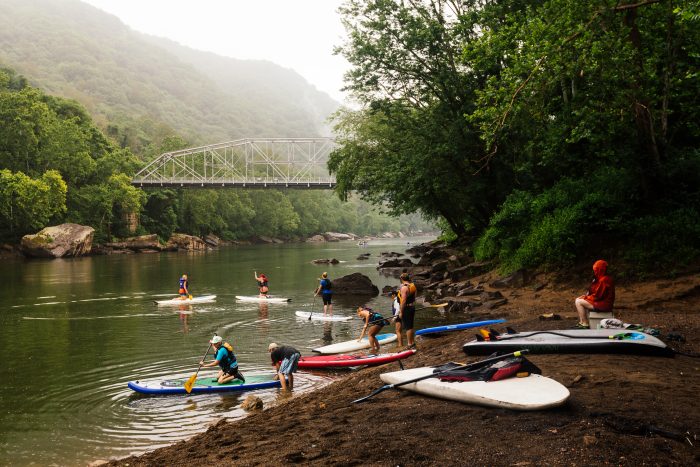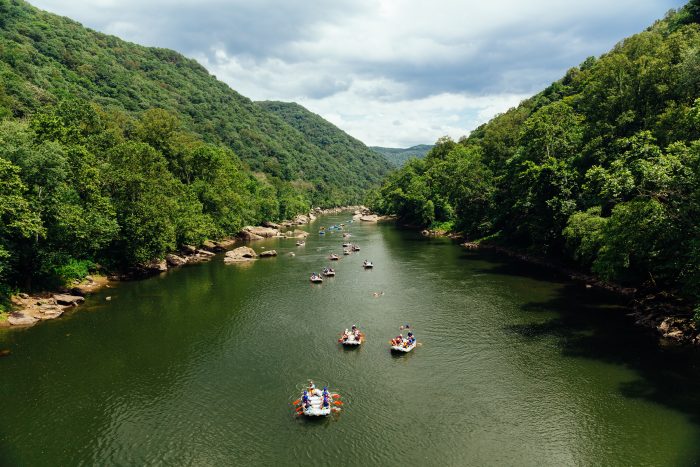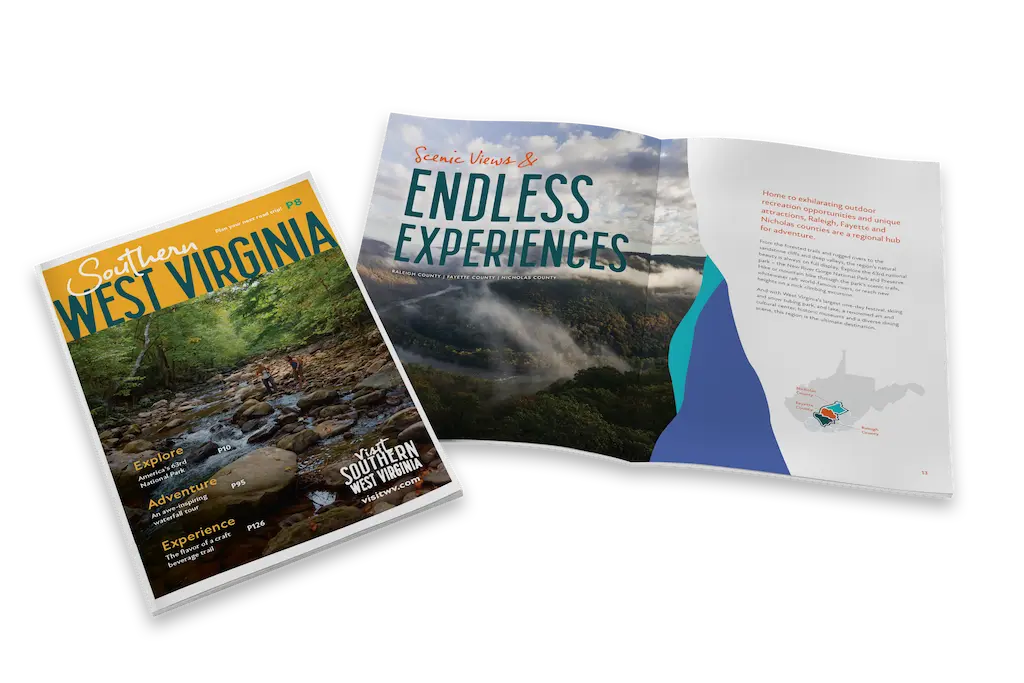Choose Your Own Whitewater Adventure in SWV
July 7, 2017The New and Gauley rivers that run through Southern West Virginia make the region known worldwide for its whitewater rafting and kayaking runs.
Every amazing adventure takes you through a series of whitewater rapids, each with its own challenges.
Here’s our guide to some of the most interesting rapids along the rivers in Southern West Virginia — not just the most exciting, but also the most underrated, and those with unique history, stories and local lore you may have missed your last rafting trip.
There are lots of ways to play in the famous waters of southern West Virginia:
- Kayaking/duckying — Paddle solo in a kayak, or the kids can captain their own sturdy duckie.
- Rafting — Challenge yourself to paddle as a team with a crew of 8. Request a smaller boat for a wilder ride!
- SUP — Stand-up paddleboard the smooth lake waters, or try out some easy rapids
- OTHER — Take a jetboat or other ride through the rapids.
There are 4 unique sections of river you can run, with trips suitable for everyone from kids and families to the more experienced thrillseekers.
The Upper New River
The New River may be one of the world’s oldest, digging into the sandstone cliffsides to create “The Grand Canyon of the East.” It is the tamer of the southern West Virginia whitewater rivers, and the Upper New is the calmest stretch. Full of history, scenery and small rolling rapids, it’s a great ride for young kids. In fact, they can paddle on their own in a duckie.
The Lower New River
This is the quintessential West Virginia whitewater rafting run. It’s still fit for families, but it swells with much bigger waves than its upstream sibling. Prepare to be splashed, and maybe even for a short swim!
The Upper Gauley River
This legendary section of river is one of the top whitewater runs in the world — challenging and remote with huge, one-of-a-kind rapids. This “Beast of the East” is only flowing a few days a year in the fall, so you have to catch it in September or October. If you’ve never rafted before, you’ll probably want to take a practice run on the Lower New before taking on the Upper Gauley.
The Lower Gauley River
As any raft guide will tell you, the Lower Gauley doesn’t get enough respect, only because it’s overshadowed by the legendary status of the Upper section. But it’s every bit as world-class, with plenty of challenging waves and big hits, not to mention the same pristine, remote scenery that has earned the Gauley River area the prestigious distinction of a National Park.
Any experienced paddler will know the different aspects of a river that create a rapid and the various classes. But, for anyone who is interesting in floating down top of the line whitewater but hasn’t yet may want to take note of these whitewater facts:
Rapid types:
- Hydraulics/ holes– As water tumbles over obstacles in the river, it can cause a hydraulic, recirculating back on itself to create a “hole.”
- Falls– Waterfalls. Yes, you can really raft over waterfalls! Most of them are sudden but small, although our biggest will drop you a swift 14 feet.
- Waves– Just like at the beach. You may ride through choppy “trains” of rippling waves all in a row, and some tall crashing ones sure to splash!
Keep an eye out for the eddys, too. These are calm pools of water, usually downstream of an obstacle. If you fall out, your guide will tell you to swim to these safe spots to await pickup.
- Class I– These small ripples are easiest to float on through.
- Class II– This means you’ll have to paddle a little.
- Class III– Here’s where the big waves begin!
- Class IV– This means to watch out: there are some hazards to avoid here
- Class V– This will be very technical! Listen closely to your guide.
There’s also a such thing as Class VI, but those rapids are too dangerous to run. Some classifications can change depending on how high the water is, too.
If you are ready to give whitewater rafting a whirl or maybe you want be a bit more chill activity like SUP or ziplining, there are numerous outfitters in the region to help you plan adventures of all types.
How will you ride the rapids?


